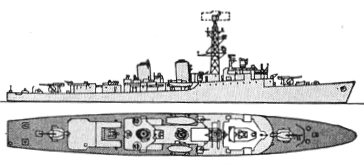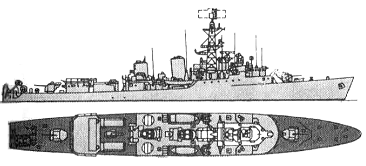
NAVYPEDIA
 Support the project with paypal
Support the project with paypal
Photo

Gurkha 1977 Many thanks to Wolfgang Stöhr for additional information on this page.
Ships
| Name | No | Yard No | Builder | Laid down | Launched | Comp | Fate |
|---|---|---|---|---|---|---|---|
| Ashanti | F117 | 2121 | Yarrow, Scotstoun | 15.1.1958 | 9.3.1959 | 23.11.1961 | HS 1980 |
| Eskimo | F119 | 2001 | White, Cowes | 22.10.1958 | 20.3.1961 | 21.2.1963 | BU 5.1992 |
| Gurkha | F122 | 4180 | Thornycroft, Woolston | 3.11.1958 | 11.7.1960 | 13.2.1963 | to Indonesia 4.1984 (Wilhemus Zakarias) |
| Mohawk | F125 | 1063 | Vickers-Armstrong, Barrow | 23.12.1960 | 5.4.1962 | 29.11.1963 | BU 9.1982 |
| Nubian | F131 | Portsmouth DYd | 7.9.1959 | 6.9.1960 | 9.10.1962 | sunk as target 27.5.1987 | |
| Tartar | F133 | Devonport DYd | 22.10.1959 | 19.9.1960 | 26.2.1962 | to Indonesia 1984 (Hasanuddin) | |
| Zulu | F124 | 674 | Stephen, Govan | 13.12.1960 | 3.7.1962 | 17.4.1964 | to Indonesia 1984 (Martha Krystina Tiyahahu) |
Technical data
| Displacement standard, t | 2300 |
|---|---|
| Displacement full, t | 2700 |
| Length, m | 106.7 pp 109.7 oa |
| Breadth, m | 12.9 |
| Draught, m | 4.00 max |
| No of shafts | 1 |
| Machinery | COSAG: 1 set Metrovick geared steam turbines, 1 Babcock & Wilcox boiler + AEI G6 gas turbine |
| Power, h. p. | 12500 + 7500 = 20000 |
| Max speed, kts | 27 |
| Fuel, t | oil + gas turbine oil 400 |
| Endurance, nm(kts) | 4500(12) |
| Armament | F117, 119, 122, 125, 131, 133: 2 x 1 - 120/45 Mk 5, 2 x 1 - 40/60 Mk 7 or 2 x 1 - 20/70 Mk 7, 1 x 3 - 305 Limbo Mk 10 ASWRL, 1 helicopter (Wasp) F124: 2 x 4 Sea Cat GWS21 SAM (24 Sea Cat), 2 x 1 - 120/45 Mk 5, 1 x 3 - 305 Limbo Mk 10 ASWRL, 1 helicopter (Wasp) |
| Electronic equipment | type 965 AKE-1, type 293Q, type 903, type 978 radars, type 170B, type 177, type 162 sonars, UA-8/9 ECM suite, 2x Corvus decoy RL |
| Complement | 253 |
Standard scale images

Mohawk 1963

Ashanti 1963

Eskimo 1979
Graphics
Project history
Inspired by the work already done on the Common Hull Frigate, the Naval Staff drew up a project known as a Common Purpose Frigate (later called a Sloop) having a second-rate AA, ASW and AD capability; in effect this meant a reversion to general-purpose ships, an admission that the breakdown into single-purpose ships was wrong. The armament was to be two twin 102mm Mk 16, a twin 40mm Mk 5, a Limbo Mk 10 mortar and eight ASW TT. The standard sonar and radars were to be provided, but a measure of aircraft-direction was to be provided by a USN SPS-6C long-range radar.
Several changes of armament were proposed: a twin 76mm/70 Mk 6 and two Vickers single automatic 102mm in turn, but these were rejected to avoid pushing up dimensions. Then it was decided to Anglicise the SPS-6C radar, and until the weight and dimensions of the new Type 965 radar aerial were known the lattice mast could not be designed; allowance was made for an aerial weighing 2 times the manufacturers' 1956 estimate, and this turned out to be sufficient! The result was a very light mast which actually weighed less than the array it carried. Less difficulty was encountered with the fire control, for the Type 802 system was cancelled and replaced by the light MRS3, again Anglicised USN equipment, this time based on their Mk 56 director.
The designation 'sloop' was chosen deliberately because 'frigate' denoted a single-mission ship, and from the unused general purpose 80 series came the later designation Type 81. Subsequently there was political pressure to show that the RN was capable of increasing its frigate force, and to bow to this whim the worthy designation of sloop was changed to frigate. There was a need to replace the nine 'Loch' class vessels in the Persian Gulf, and this became the prime mission for the new design. Several more attempts were made to upgrade the design, mainly to increase speed, but these were ruled out.
The most important innovation was the adoption of COSAG machinery, half that of the Kent class, whose design was proceeding at the same time. Ashanti was thus in effect the test-bed for the new machinery and the weight saved could be used for a more effective armament. Air warning radar could be accommodated, and as the trials with light helicopters in Type 15 frigates had proved successful it was decided to try to incorporate a hangar for a Fairey Ultra Light helicopter. This hangar was ingenious, the lift forming both the roof of the hangar and the flight deck. When the helicopter (in fact a Wasp) was stowed the hangar was closed by portable roof-sections.
The adoption of COSAG machinery necessitated two funnels, the foremost serving the boiler room and the aftermost the gas turbine room. The ships were also unusual in having a tapering flush deck, giving good freeboard forward on a small displacement without sacrificing strength or covered access. On the displacement and cost-limits it was possible to provide only two single hand-loaded semi-automatic 114mm Mk 5 guns (for shore bombardment) but provision was made for two Seacat (2 x 4) launchers, which replaced the 40mm weapons.
Modernizations
1970, Ashanti, Gurkha: + type 199 sonar
late 1960s, Ashanti, Eskimo, Gurkha, Mohawk, Nubian, Tartar: - (2 x 1 - 40/60 or 2 x 1 - 20/70); + 2 x 4 Sea Cat GWS21 SAM (24 Sea Cat), 2x type 262 radars
late 1970s, all: - type 293Q radar; + type 993 radar
Naval service
No significant events.
Many thanks to Wolfgang Stöhr for additional information on this page.
 HOME
HOME FIGHTING SHIPS OF THE WORLD
FIGHTING SHIPS OF THE WORLD UNITED KINGDOM
UNITED KINGDOM ESCORTS
ESCORTS "TRIBAL" frigates (ASHANTI) (7, 1961 - 1964)
"TRIBAL" frigates (ASHANTI) (7, 1961 - 1964)
